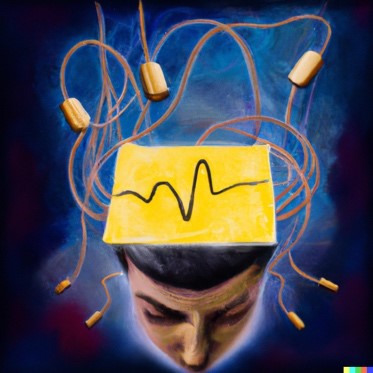Research
The cortical footprint of DBS in the superolateral medial forebrain bundle
Start Date: starting in 2023!
Funding: DFG Walter Benjamin Programme (funding attributed to J Pereira)
Project Description:
Recently, DBS has been proposed as a treatment for severe disorders of psychiatric nature, among them major depressive disorder and obsessive-compulsive disorder. There is evidence that stimulation of the superolateral medial forebrain bundle (slMFB) has a quick and strong antidepressant effect in treatment-resistant major depressive disorder. However, the electrophysiological cortical effects of deep brain stimulation in this pathway remain uncharacterized. This project aims to (1) describe, using electroencephalography (EEG), the cortical correlates of slMFB stimulation in a chronic stimulation setting, and to (2) find if these correlates are sensitive to different stimulation patterns.
INFER – Inferring Neural Markers in Major Depression Disorder
Project Description:
INFER is a sub-study part of the ongoing FORESEE III clinical trial. In this project we investigate the acute effects of deep brain stimulation (DBS) status on electroencephalography (EEG) and local field potentials (LFPs) recordings from the superolateral medial forebrain bundle (slMFB) via externalized leads. The target population are patients suffering from treatment resistant depression.
PD interaktiv I – Extending the Data-Driven Characterization of Neural Markers During Deep Brain Stimulation for Patients with Parkinson’s Disease
Project Description:
This project is a continuation of our previous work in [1] which demonstrates a good decoding of motor performance in Parkinson’s Disease by deriving patient-specific spatial filters solely based on EEG data. We aim to extend this work by incorporating both electrocorticography (ECoG) and LFPs signals as features for the decoding models.
[1] Castaño-Candamil, S., Piroth, T., Reinacher, P., Sajonz, B., Coenen, V. A., & Tangermann, M. (2020). Identifying controllable cortical neural markers with machine learning for adaptive deep brain stimulation in Parkinson’s disease. NeuroImage: Clinical, 28, 102376.
We are thankful for the patients who participate in our studies!
We are thankful for the funding agencies that support these projects:
Deutsche Forschungsgemeinschaft (DFG)


